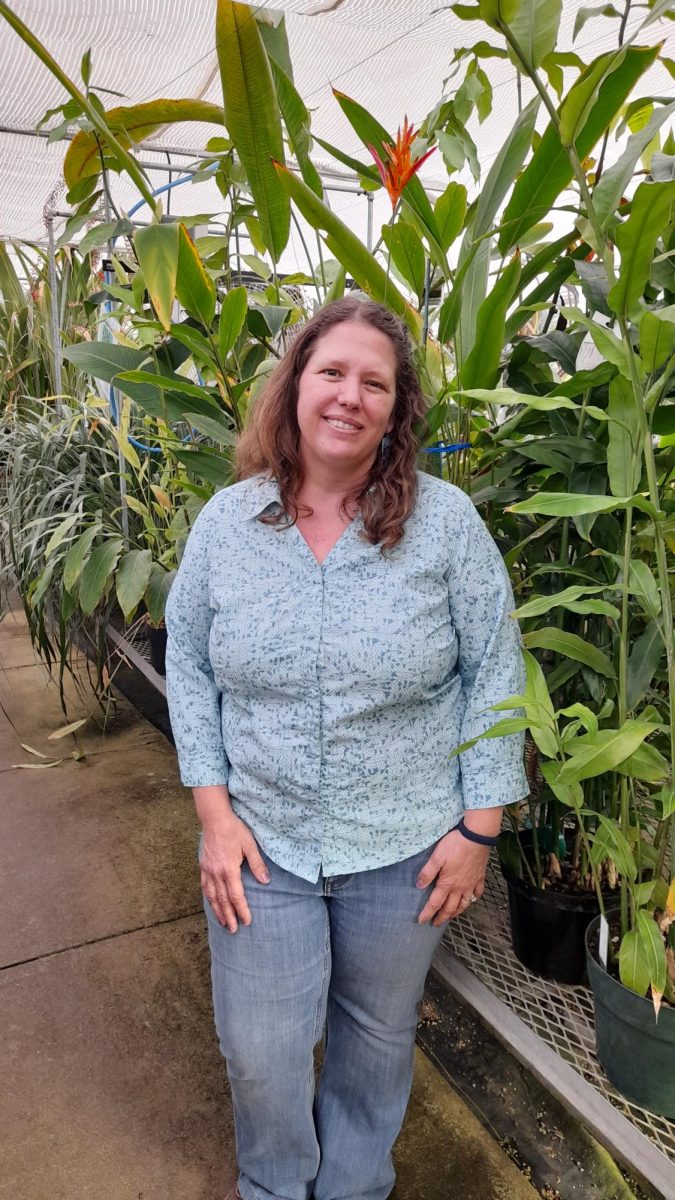Under a strictly controlled environment in the Botany Greenhouse grows a sweet fern — one amongst many of its like. Every now and then it feels a hand or a tweezer poking its stalk, its weeds cleared out and water sprayed. Through periods of the winter it has shot up from the soil under florescent lights, it now grows, occasionally intruded by weeds, resting insects, dressed in yellow pollen sometimes and the seeping rain from the outside world.
The sweet fern will soon emerge as the centerpiece of the Botany Garden outside the greenhouse, to thrive in its spotlight along with marigolds, water lilies, aquatic sedges and several other plants, shrubs and trees. For now it continues to grow in the greenhouse at Birge Hall along with other several other plants — carnivores, deciduous, perennials, citrus and cacti.
Managed by the Department of Botany, the greenhouse plays a crucial role at the university, assisting with classes and research initiatives. It is now under the leadership of UW’s Living Collections Manager III, Cara Streekstra, who has been with the department for over 12 years.
“We help further botany, education and teaching,” Streekstra said. “That’s the main focus of what we do in the botany greenhouses, teaching support. We grow plants specifically for use in lab courses and for horticulture, agronomy and also art classes and English classes.”
One of Streekstra’s main roles is to maintain the botany garden present outside the greenhouse at 1090 University Ave., especially through Wisconsin’s harsh winters.
The garden was started in 1961 by a committee of botany professors along with the support of the then university President Conrad Elvehjem. It is home to a variety of local and foreign species with new additions made every year. It is also home to a thriving school of koi fish.
Every winter, the botany garden is cleared out of its plant and aquatic life. They are moved into the greenhouse — their winter home until the next spring — or used for other purposes. Here they are used to grow another generation of plants, distributed to other gardens, pruned and maintained as the department’s staff make plans for next spring.
The department, under the leadership of Streekstra, has already began its efforts to prepare for the coming spring and expect the garden to return to its summer vitality by the month of May.
“It’s spring in [the greenhouse],” Streekstra said. “All of our deciduous trees are starting to leaf out and perennials are starting to regrow.”
A visitor to the greenhouse can glimpse their preparations for May. As Streekstra explains, the process begins with cuttings from plants and seeds which are grown in groups under full spectrum fluorescent light for 18 hours a day throughout the germination process. Once sufficiently matured, they are placed in the greenhouse, their homes being temporary pots with heat expanded rocks.
Here, the plants are allowed to grow in a regulated environment with care provided against weeds, insects and other harmful forces.
Another fascinating aspect of the garden is the pond that the koi fish with golden scales call their home. During the winter, the pool is dried out and the fish are taken into the greenhouse where they continue to grew and multiply. Commenting on their vitality to the garden, Streekstra said they complete the ecosystem. Fish waste are a vital force for the growth of the garden’s aquatic plants, including water lilies and aquatic sedges.
Streekstra shared her vision for the botany garden this spring. The department seeks to promote and focus on plant life Indigenous to Wisconsin with the most exciting plant — the sweet fern, which is going to be placed in the center of the garden along with plants from the similar family.
“[Sweet fern] is a plant that I have mostly seen in northern Wisconsin,” Streekstra said. “So I’m excited to see how it does down here, yeah. So it’s going to be right at the center of the garden where that group is focused.”
The department’s focus on plants local to Wisconsin will lead to new additions to the garden resulting in previously unfound shrubs and perennials this year including the sweet fern.
As the department prepare for a busy and bustling summer garden, Streekstra and staff encourage Madison residents and students to visit their greenhouses and take a peek into their process. Attendees can see the variety of plant and aquatic life that they preserve, sustain and grow through the winter months to spread across their garden in the spring.



